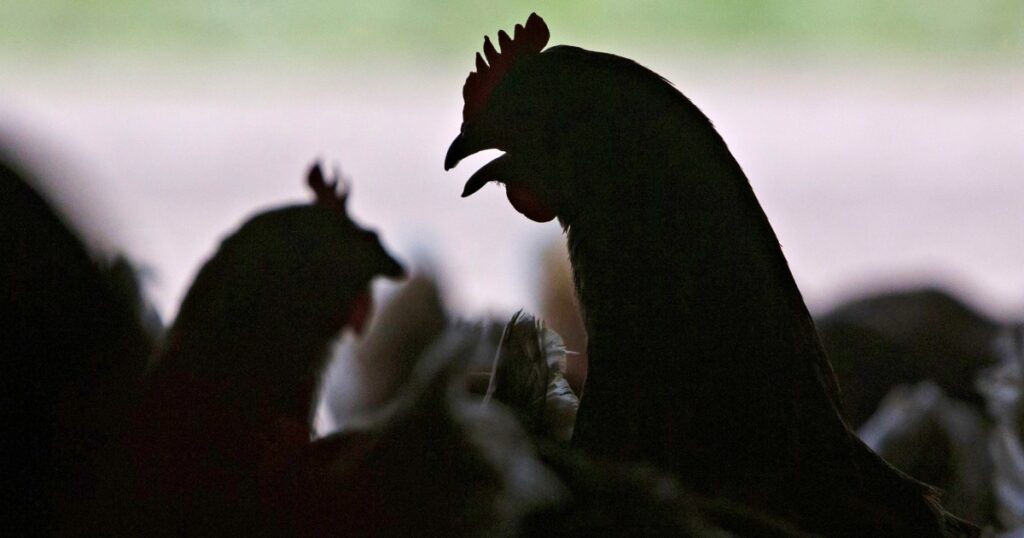
A person in Louisiana has been hospitalized with bird flu — the country’s first severe human H5N1 infection, according to the Centers for Disease Control and Prevention.
“The patient is experiencing severe respiratory illness related to H5N1 infection and is currently hospitalized in critical condition,” said Emma Herrock, a spokeswoman for the Louisiana Department of Health.
The CDC said the patient was likely exposed to the virus from a backyard flock, which would mark the first time such a flock has been associated with a bird flu infection in a U.S. resident.
“While an investigation into the source of this infection in Louisiana is ongoing, it is believed that the patient that was reported by Louisiana had exposure to sick or dead birds on their property,” said Dr. Demetre Daskalakis, director of the National Center for Immunization and Respiratory Diseases, during a briefing Wednesday.
The case was reported as a presumptive positive by Louisiana on Friday and later confirmed by CDC laboratory testing.
Daskalakis said the Louisiana Department of Health was conducting an investigation, monitoring the patient’s contacts for exposure and offering testing and antiviral medication as needed.
The patient is over the age of 65 and had underlying medical conditions, Herrock said. She did not address questions about the patient’s symptoms or the backyard flock.
In the United States this year, 61 human cases of avian influenza have been reported. Wisconsin officials on Wednesday announced that they had detected an additional probable case, in someone who was exposed to infected birds at a commercial poultry operation. That case is pending confirmation by the CDC.
No person-to-person transmission of bird flu has been documented so far. Most cases in people have been mild and found among farmworkers exposed to the virus through interactions with infected poultry or cattle. Common symptoms in earlier cases have included pinkeye, coughs and sneezing.
Dr. Peter Chin-Hong, a professor of medicine at the University of California San Francisco who studies infectious diseases, said the Louisiana case highlights the risks of exposure outside of farms.
“We’ve been focusing on dairy workers and poultry workers, but an emerging risk is handling dead birds in your backyard,” he said.
Daskalakis said that the CDC is still working to better characterize the virus’s genome, which will help researchers understand whether it has developed any concerning mutations that might allow it to spread from person to person.
Early indicators in the Louisiana case suggest that the version of virus causing the infection is similar to what has been circulating in wild birds and poultry in British Columbia, Canada, and Washington state.
A teenager in British Columbia was hospitalized in November after contracting the same genotype of the bird flu virus. Canadian health officials were not able to determine the source of the teen’s infection.
“What this illustrates is people can get really sick from bird flu, and to me it’s related to the case in British Columbia,” Chin-Hong said. “These patients are both united by the same variant.”
The CDC said the development does not change its assessment of H5N1’s immediate risk to public health, however, which it says remains “low.”
H5N1 began circulating widely among wild birds in the U.S. in 2022 then spread to poultry farms and backyard flocks. At least 123 million birds have been killed or euthanized because of the virus since 2022, according to the CDC.
This spring, bird flu began to spread among dairy cows, and at least 16 states have since detected the virus in cows.
Research on dairy farms has shown the virus can spread efficiently between mammals. Scientists have found that it likely spreads between farm animals through raw milk because infected cows shed large amounts of the virus through their mammary glands.
Although there is no evidence of the virus spreading between humans, scientists are concerned that it could mutate and develop that ability, which could touch off the next pandemic.
In the U.S., there have been two cases so far in which health officials could not determine the source of a person’s exposure to bird flu. One was an infection in a California child reported in November. The other was in a hospitalized patient in Missouri, who tested positive for H5N1 in August and recovered.
Daskalakis said the CDC considers the Louisiana case the first severe H5N1 infection because other conditions likely caused the hospitalization of the Missouri patient.
Additionally, Delaware health officials reported a case of H5N1 this week in a person without known exposure to poultry or cattle. But CDC testing results could not confirm the virus was H5N1, Daskalakis said, and the case is listed as a “probable.“













